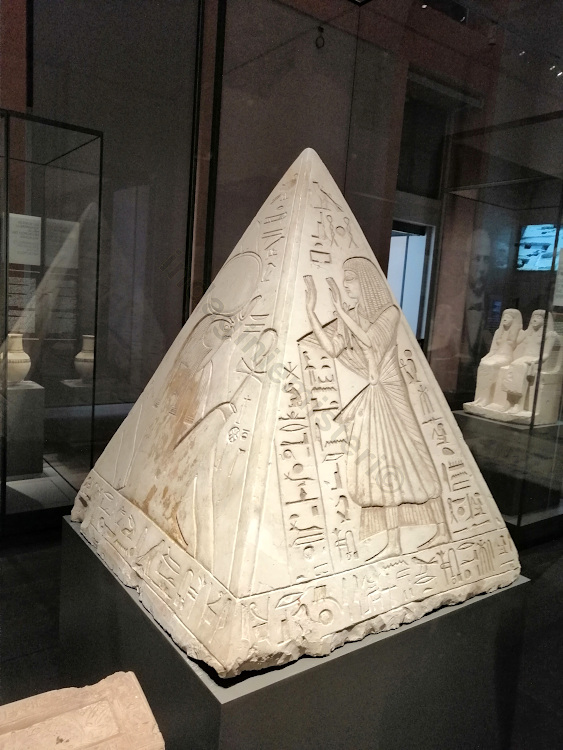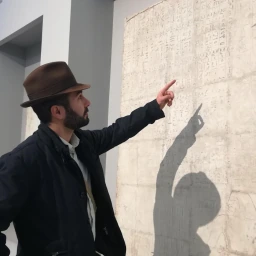When Jean François Champollion succeeded in deciphering hieroglyphs for the first time in 1822, thanks to the discovery of the Rosetta Stone, he had to overcome considerable difficulties of interpretation. The writing of the Ancient Egyptians shows a very different conception of the world from that of modern man. First of all, he had to demolish a deep-rooted anthropological-evolutionary prejudice, according to which modern thought forms are better than ancient ones; Champollion recognised that hieroglyphic writing belonged to an extremely refined and complex culture.
The origin of those three thousand symbols that make up the hieroglyphic script, “sacred carvings” according to a misleading etymology of the term1, is lost in the millennia of ancient Egyptian history. They were not intended exclusively for temples and sacred areas, as one might suppose; rather, they were the expression of a practical everyday life, in which the sense of the sacred was sometimes evoked.

The numerous depictions of hieroglyphs
Champollion was the first to understand the multiplicity of interpretations, the conceptual stratification that characterises this form of writing. It is phonetic, alphabetic and syllabic, as well as figurative. In its pictograms and ideograms of meaning lies the complexity of the language. Each hieroglyph indicated a real object but, simultaneously, could have a conceptual meaning. For example, an ear indicated the sense of hearing; an inflated sail meant the wind, and so on. This methodology derived from the need to represent both the real and the abstract. The hieroglyphic rarely contains symbolic figures, which will be examined later.

The Phonetic value of the hieroglyphs
Hence, with a high conceptual complexity, Ancient Egyptians had difficulty of finding adequate ideograms. This criticality was solved by associating the phonetic expression of the language with the ideograms, despite what they represented. Thus for indicating the concept of son a goose was depicted, simply because the words “son” and “goose” had the same consonants. Certainly the pronunciation of the two terms was different, but this is something that remains unknown to us.
The combination of the hieroglyphs makes a name or a concepts. In fact, it was not so important the elements’ order of appearance but their representation as a phonetic and figurative combination. Overtime hieroglyphs were drawn in a more stylized way for indicating their phonetic value. Hence, the cursive form of Egyptian hieroglyphs developed, called hieratic. Further stylistic simplification then led to a more immediate form in popular use: demotic.
Some hieroglyphs with symbolic meaning
Hieroglyphs are ideograms since they express a concept strictly linked to the representation, but not all of them are symbols. Each symbol has a wider meaning, which stands for something else pertaining to an abstract reality. For instance, the cross is a symbol of the Christianity since it expresses a universal value of belonging to a group. The Latin etymology of the term symbolum (“sign of recognition”), from the Greek word συμβάλλω (“to put together”), expresses the concept. For these reasons, hieroglyphs as symbols are rare, cause this form of writing was used in everyday life. Nonetheless, we have a few of them with a a propitiatory, apotropaic or of worship meaning. In the following paragraphs some symbols are investigated: the Ankh, the sun disk, the Djed, Kheper and the Udjat2.

Ankh
Also known as the ‘key to life’, Ankh is represented as a cross shape, a cross surmounted by a handle. It symbolises life, the vital breath that permeates existence. It could be considered both in its earthly dimension and in its otherworldly significance, as the ancient Egyptians believed in the immortality of the soul. The Ankh is symbolically the key that opens the door to the world of the dead.
Howard Carter, the famous discoverer of Tutankhamun’s tomb, identified the origin of the ideogram in the symbolic union between the male and female principles. The handle is a symbol of Isis, representing the uterus, and the tau is related to Osiris.

The Sun disk
A depiction of the solar disc was an image of the sun as a star, and of its cult-related aspects. The religion of the ancient Egyptians was a monism, the principle that deities are different aspects of reality. Thus, the solar disk indicated Ra, the divine principle identified with the sun at noon. He was worshipped as the guardian of heaven, earth and the afterlife. Indeed, Ra allowed the continuous alternation of light and darkness, life and death, thanks to his solar boat (Mandjet).

The Djed
The Djed is a figurative representation of the spine of Osiris, which ideally supports the vault of the firmament. In fact, Osiris was the guardian of the afterlife, which the ancient Egyptians identified with the constellation Orion. Therefore, the Djed was a symbol of the eternity of life. The representation of Osiris inside a burial chamber was not only an augury, but was also considered to be the real presence of the deity welcoming the soul into heaven. A wonderful example was found in the Tomb of Senenmut.

Kheper
The ancient Egyptians were fascinated by the scarab that pushed a ball of dung along the ground, larger than itself, every day at sunrise, towards the east. For this reason, the dung beetle was linked to sun cult; ideally the sun is pushed across the sky like that ball of dung. So, the figure of the scarab was added to the hieroglyphic writing. It was believed that the bug, called Kheper, could regenerate from the dung ball. Thus, the ideogram of the scarab is a symbolic figure of resurrection. Furthermore, the Egyptian verb ‘to become’ has the same consonants as kheper. The scarab had a propitiatory value and was placed inside tombs to augur the passage from life to death.

Udjat
Known as the Eye of Horus, the Udjat was used by the ancient Egyptians as a symbol of protection and good health. This symbolic meaning recalls the myth of Horus and Seth and their cosmogonic struggle. Trying to avenge the murder of his father Osiris, Horus lost his eye. Horus was healed by the deity Thoth, returning to udjat, which means untouched.

Thus, the eye of Horus is symbolic of the establishment of cosmic order over chaos. It provided the magical function of protecting the dead after their passing.
Samuele Corrente Naso


